Bird Conservancy runs many scientific, educational, and outreach programs that promote birds and their habitats and inspire people’s love of nature, and we are proud of the impact we have on our communities. In one year alone, we enhanced over 29,000 acres across six states, reached almost 6,000 participants through virtual outreach opportunities, and monitored one million acres to determine bird responses to management and restoration efforts. But none of these programs would be successful without our talented and dedicated staff. I’d like to highlight one employee who works behind the scenes year-round to implement one of the largest breeding bird monitoring programs in North America – Matthew McLaren. Matthew is the coordinator for the Integrated Monitoring in Bird Conservation Regions (IMBCR) program at Bird Conservancy, a role he has filled since 2016. Before that, Matthew assisted Bird Conservancy as a seasonal technician helping to mark mountain plover nests in agricultural fields and training landowners to spot and mark plover nests in their fields. He’s been a dedicated member of our organization since 2011, and as Liza Rossi, Bird Conservation Coordinator for Colorado Parks and Wildlife, says “Matthew is what makes IMBCR work year in and year out.”
- Matthew taking a break from conducting a survey near Durango, CO. Photo courtesy of Matthew McLaren.
- Matthew presenting at an IMBCR Partners meeting. Photo by Nicole Reese.
The IMBCR program is a collaboration between state and federal agencies, joint ventures, and other non-profits, with Bird Conservancy spearheading the effort. Through IMBCR our team collects breeding bird data on private and public land to obtain a better understanding of bird populations and and evaluate management actions and conservation efforts on bird populations. Since Matthew began working with IMBCR in 2011, the program has expanded from just few states to 16 states and now reaches from the Great Basin to the Great Plains. The partnerships have also grown and now include over 30 different organizations who help fund the monitoring effort or help collect the data.
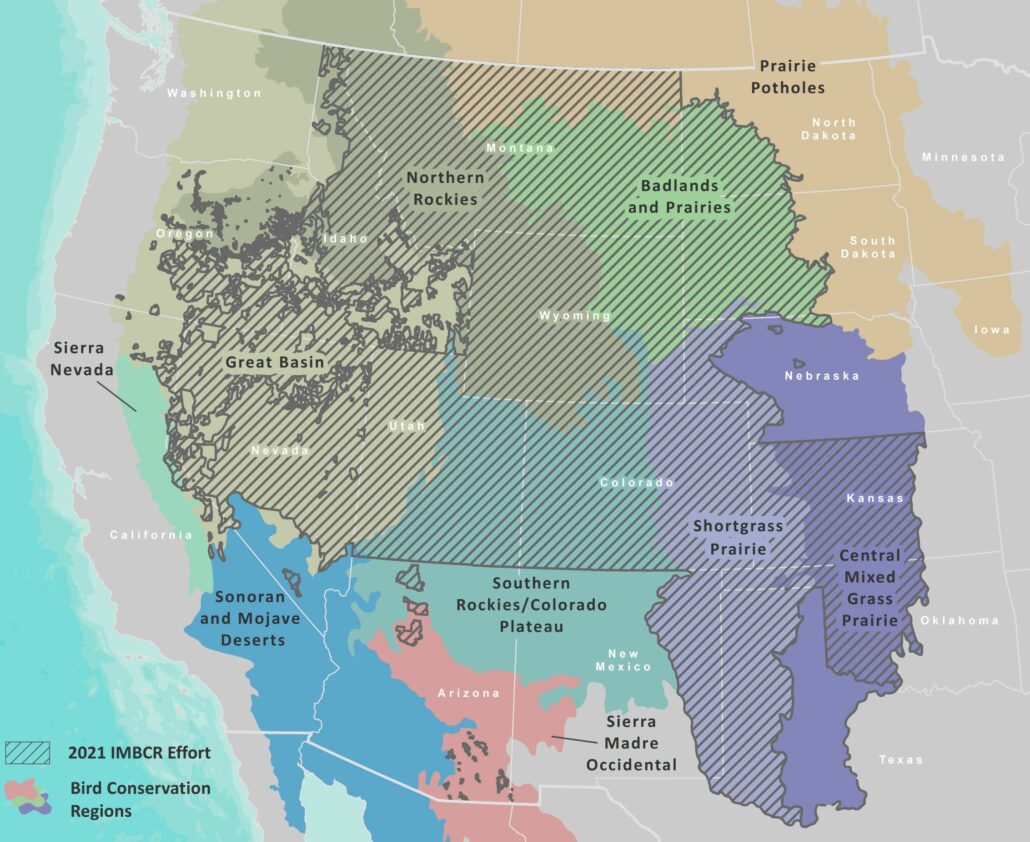
IMBCR footprint as of 2021. The different colors represent different Bird Conservation Regions.
Much like the birds he monitors, Matthew’s job duties migrate seasonally. From late winter through spring, Matthew is the busiest, preparing for the field season by hiring a small army of seasonal technicians, updating protocols, getting funding agreements and sampling plans in place, and coordinating with field implementation partners to ensure they have what they need. He also assists other IMBCR avian ecologists at Bird Conservancy to train up to 40 seasonal technicians and crew leaders. May through July is when the bulk of the surveys are conducted, and Matthew makes sure he spends a couple weeks doing surveys himself so he can stay in touch with the field protocol, keep his bird ID skills sharp, and understand challenges the technicians might be facing.
- Matthew backpacking into a survey in the San Juan National Forest. Photo courtesy of Matthew McLaren.
- Matthew conducting a survey in the Rio Grande National Forest. Photo courtesy of Matthew McLaren.
From late summer through early winter, the work moves indoors as thousands of data records must be entered and then reviewed for quality control. Matthew also completes progress and end-of-year reports at this time, and assists with data analysis and the 100+ page annual report. Even though this doesn’t sound exciting compared to hiking in the woods looking for birds, Matthew enjoys the post-field season the most because he learns if any new species were detected, hears fun field stories from the technicians, and determines the survey completion rate (the number surveys completed compared to the initial goal for the season) for the IMBCR program. This last piece also happens to be an accomplishment Matthew is proud of: not only has the program grown immensely to add new states and partners, but it also maintains a 98% or higher completion rate each year. This represents thousands of bird surveys completed each year across almost 850,000 square miles!
Like many aspects of life, the pandemic presented challenges for Matthew and the IMBCR team, especially in 2020. They had to ensure everyone was comfortable doing their work and that they would not be putting local communities or technicians at risk. Fortunately, conducting bird surveys is generally a solitary activity, often done in remote places. After lengthy discussions with partners and the development of a COVID field safety protocol, they decided to move forward with the field season. As Matthew will proudly note, the survey completion in 2020 was on par with any other field season, and we didn’t miss a year gathering important information on bird populations. Most importantly, the field crews stayed safe and healthy all season without a single COVID case reported.
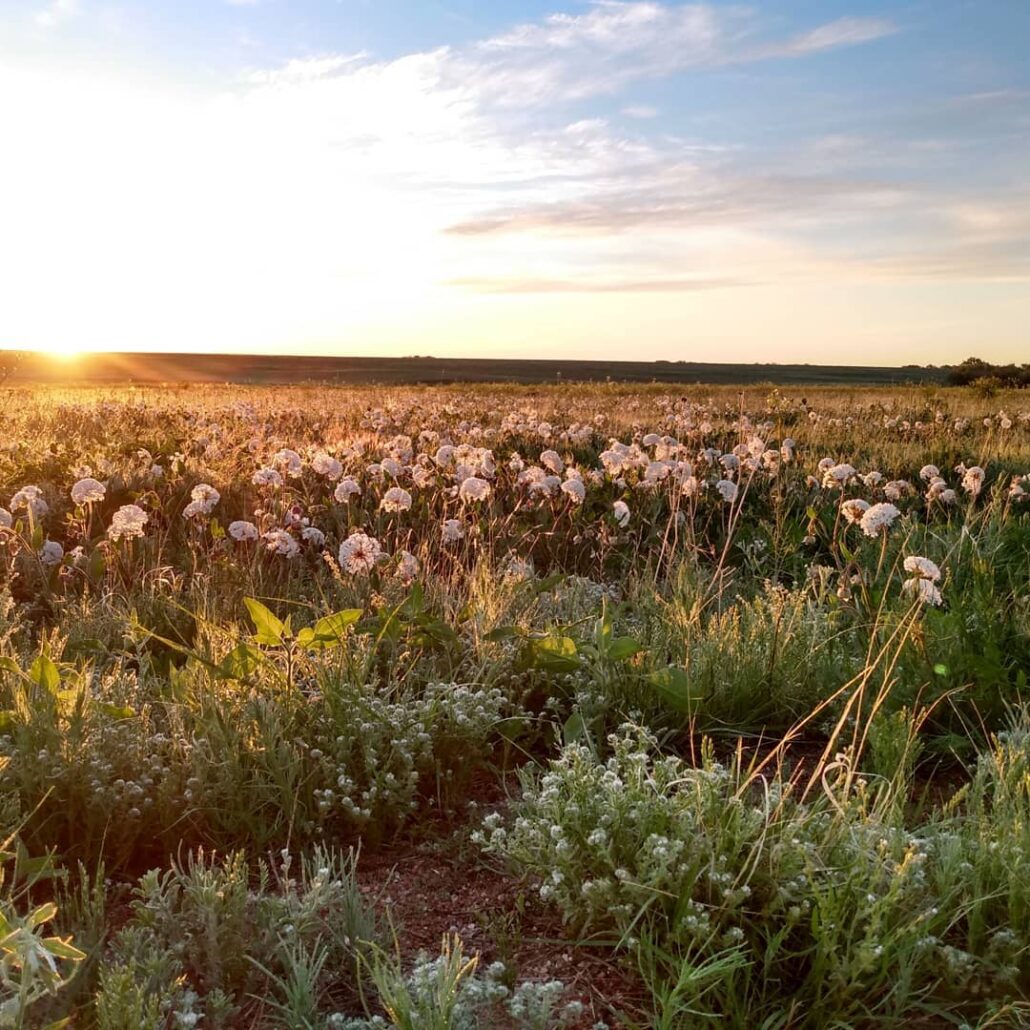
Sunrise on a private conservation easement in east-central Colorado. Photo by Jennifer Timmer.
Through his role coordinating the IMBCR program, Matthew contributes to Bird Conservancy’s mission in several ways. In order to protect birds and their habitats, we need reliable estimates of bird populations to ensure we’re targeting the species and places that need the most help. IMBCR provides this information, which also guides Bird Conservancy’s own stewardship efforts. Matthew helps partners design targeted monitoring projects, which shed light on how specific management or conservation activities affect bird populations. Because IMBCR surveys are conducted on public and private land, we also build relationships with over 2,000 private landowners each year, through outreach efforts by Bird Conservancy’s landowner liaison, and also when field technicians interact with landowners while surveying on private land. These contacts lead to important conversations about the land and birds. The IMBCR program also hires around 70 technicians each year who are often fresh out of college. This provides them a foot in the door in the bird conservation world and skills and confidence to contribute to the field. Matthew frequently provides references for former technicians who are applying for jobs with birds, and it’s rewarding to know that he’s played a part in inspiring their curiosity and love of nature. After all, Matthew wouldn’t be doing what he does at Bird Conservancy without that same curiosity and love of nature.
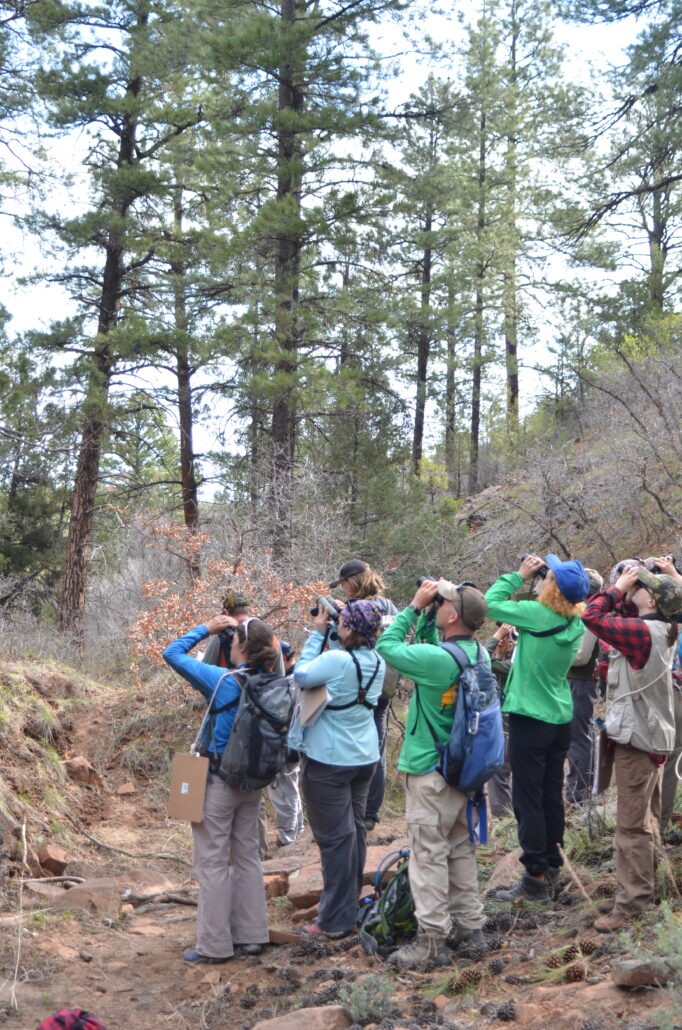
Matthew leading field training for the Colorado IMBCR crew. Photo courtesy of Matthew McLaren.
Jennifer Timmer (based in Fort Collins, CO) is the Research Scientist – Conservation Delivery Lead at Bird Conservancy of the Rockies.


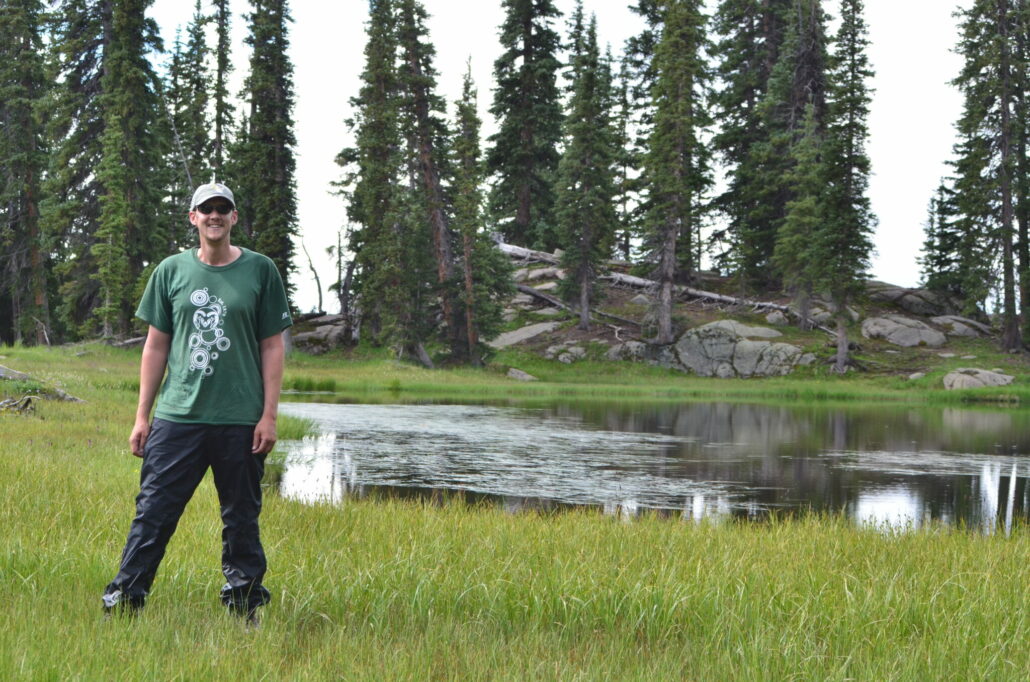
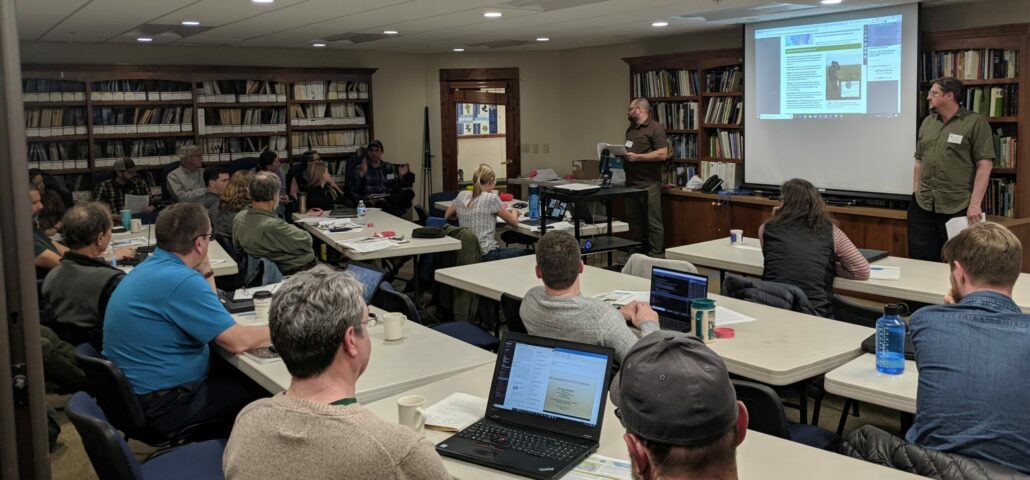
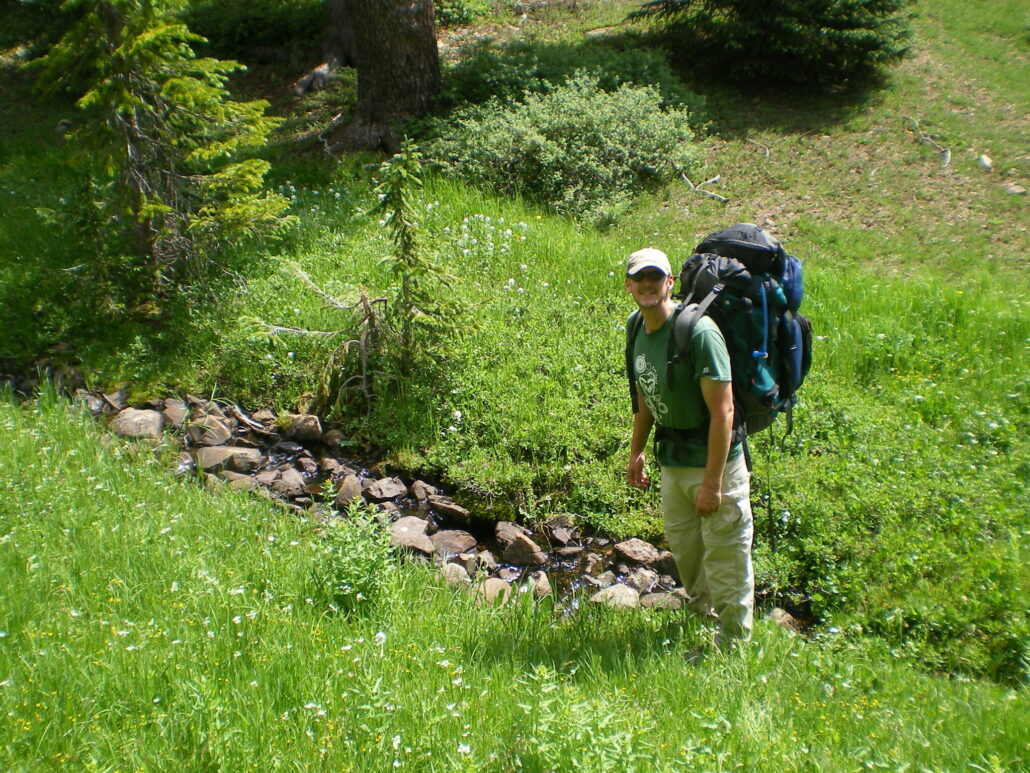
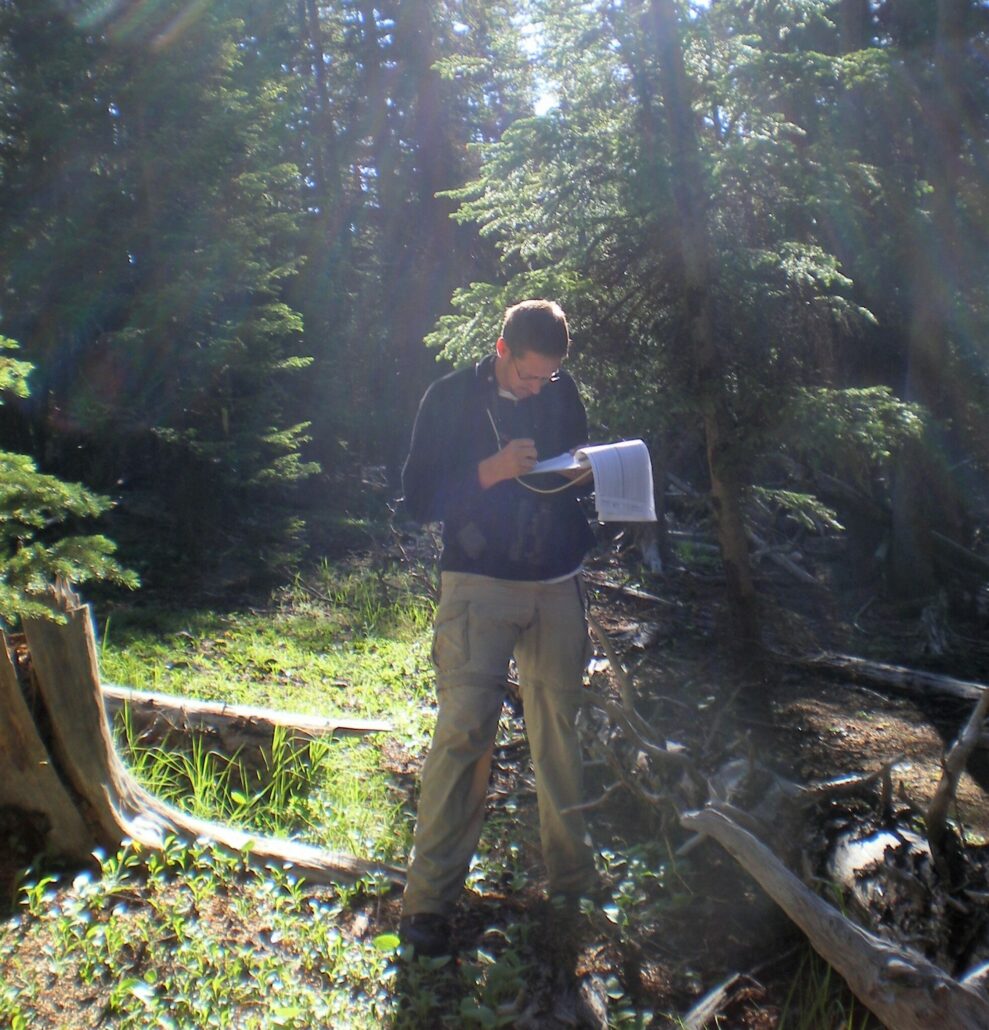

 Donate
Donate